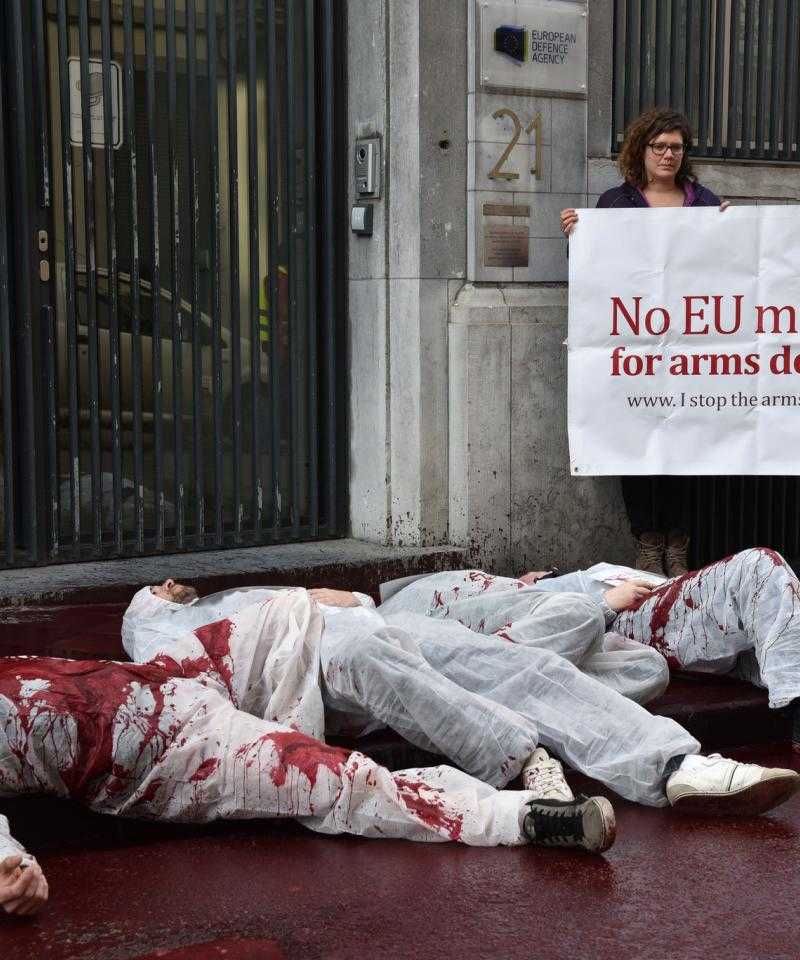How the arms industry is hijacking Europe’s defence policy

New report documents symbiotic relationship between arms lobby and the EU
In 2016 the European Union took the unprecedented step of setting up a military research programme worth 90 million euros, the so-called Preparatory Action on Defence Research (PADR). This is only a first step. For the coming ten years, the European Commission proposes the establishment of a European Defence Fund which would allocate more than 40 billion euros to the research, development and procurement of weapons.
These steps signify a fundamental change of the European project. Although arms companies have received EU funding before, this has always happened through the ‘back door’ through a security research programme. The establishment of a EU military research programme points towards an unprecedented acceleration in the militarization of the EU.
During the last couple of years, the defence industry geared up it’s lobbying activities to push for a European military research programme. The combined lobbying budget of the top ten of the European arms companies doubled during the last five years, from 2.8 million euros to 5.6 million euros a year. This is an underestimation. According to data from the Belgian national bank the arms lobbying organisation ASD underreported its lobbying budget by a factor 10. Moreover, since 2014 the European Commission has had at least 46 meetings with the arms industry to discuss the Preparatory Action on Defence Research. The sheer amount of these meetings indicates an almost symbiotic relationship which has gone much further than what would be expected of a normal ‘dialogue’ with stakeholders.
Militarizing the European budget
The decision making process of the Preparatory Action was heavily dominated by corporate interests, disclosed EU documents show. Starting from the Group of Personalities, which set out the agenda for a EU military research programme, the modalities of the Preparatory Action were almost exclusively decided on by the European Commission, the European Defence Agency, Member States and the defence industry. Civil society nor the European Parliament were given any substantial input on these far reaching decisions.
In November 2016 the European Commission published a European Defence Action Plan in which it proposed to establish a European Defence Fund. Many of the policy proposals in the Defence Action Plan were almost literally copied from proposals made by the defence industry.
Shaping future wars
The military technologies developed now, shape the wars of the future. The European Union has already started developing autonomous systems through the Pilot Project and the Preparatory Action. Despite warnings from both the scientific community and the European Parliament, these decisions to develop autonomous weapons are taken without any public debate. The European Union risks exacerbating a global arms race in robotic weapons and drones.
Similarly, other policy areas such as border management and development cooperation have become increasingly militarized. Drones and surveillance equipment are already being used by the EU to stop migration. This creates the cynical situation in which the arms industry cashes in twice: selling weapons to conflict areas and making money out of stopping refugees fleeing these same conflicts.
The European Union is at a critical juncture. It has to chose between furthering the interests of the military-industrial complex or building a safer Europe based on democratic participation.
The report Securing Profits: How the arms lobby is hijacking Europe’s defence policy is online available here: http://istopthearmstrade.eu/en/mapping-arms-trade?securing_profits
Add new comment